The Debt Service Coverage Ratio or the DSCR is one of the most critical factors for a commercial lender to analyze a commercial property loan’s risk level. When a commercial real estate lender decides to provide a loan, a healthy DSCR is what he is typically looking at.
Knowing what DSCR means and how to get everything in place that’ll lead you to build up a healthy DSCR is imperative. This blog is an overview of what DSCR is, why it is needed, how is DSCR calculated, and how DSCR affects commercial property and the size of your loan, and lastly – what you can do to improve your DSCR so that you can avail the loan you want. Let’s dive right in and understand all about Debt Service Coverage Ratio closely.
What is the Debt Service Coverage Ratio?
Debt Service Coverage Ratio is a ratio that represents the margin of income left over after the loan payments are made. The value tells your lender what part of your cash inflows or income will be left over and above the loan payments.
This ratio determines the overall repayment capacity and assures lenders about loan repayments. In simple words, the DSCR tells commercial real estate lenders in florida that the net income earned by a potential borrower is more than adequate to pay off the loan repayments.
Why is DSCR needed?
As a borrower, you would not wish to take a loan on a property whose income generated is so less that it can barely pay off the loan. Or even worse, if the revenue generated is less than the monthly loan payments. That’s not the right place to be in for you as a borrower.
Likewise, a healthy margin is of utmost importance to stated income commercial lenders as well. That’s where the concept of DSCR comes into the picture. On a general note, most lenders require you to have an additional 25 cents for every dollar of loan repayment, a DSCR of 1.25. As a thumb rule, the higher this ratio, the lower the lenders’ risk, and thus the higher the loan amount (Less risk motivates lenders to lend you more money and vice versa.)
For example: Let’s say that your annual loan payments come up to $96,000 and the Net Operating Income of your property is $145,000, then the DSCR is 1.51, which means that you are leftover with 50 cents for every dollar of loan payment made, which is a very healthy Debt Service Coverage Ratio – meaning your chances of availing this loan will be very high.
How is DSCR calculated?
The simple formula for finding the DSCR is:
DSCR = Annual Net Operating Income / Annual Debt Service
Where the Annual Net Operating Income is the gross income generated by the property, less all expenses. Annual Debt Service is the annual loan payments, which includes the principal amount and the interests thereof. For example: Let’s say that the annual net operating income of a property is $135,000, and the annual loan payments come up to $95,000, then the DSCR is $145,000÷$95,000, which gives the DSCR as 1.52.
What DSCR do lenders typically require?
It is essential to know the average DSCR that lenders typically require to assess if you can avail of the loan. The range is between 1.10 (which is the least needed for some SBA loans), and it can go up to 1.40 for commercial properties.
If the LTV (Loan-to-value ratio) is lower, lenders will not need a very high DSCR. As a general rule – you should remember that the higher the DSCR, the lower the lenders’ risk, and the larger the loan size. Here are some typical Debt Service Coverage Ratios as set by commercial lenders for business or commercial properties:
- SBA Loan – 1.10 to 1.20
- Business Loan – 1.25 to 1.40
- Multi-family property loans – 1.25 to 1.45
- Self-storage unit properties – 1.25 to 1.35
- Commercial Office Spaces – 1.25 to 1.40
- Retail Spaces – 1.25 to 1.40
How DSCR affects commercial property and the size of your loan?
As a simple rule, the higher the DSCR, the larger your loan’s size; from a commercial property lender’s perspective, this translates as – the lower the DSCR requirement, the more you can borrow from the lender. Let’s take an example to understand this closely. Let’s assume that the property value is $1,000,000, and the LTV is 75%. You want to approach two lenders, with Lender A having a DSC requirement of 1.25 and Lender B having a DSC of 1.20. Let’s assume they have the same interest rate of 5% each and the same amortization period of 30 years each. For this example, let’s take that the net operating income of the property is $56,000.
Thus, according to this example – Private Commercial Lender A can lend you a maximum of $720,000, whereas Lender B can lend you up to a maximum of $750,000. Thus, going ahead with Lender B would be a more appropriate decision for you, provided that he can lend you more money for the same terms and amortization period. Thus, as a general rule – a lender with a lower DSCR requirement is generally more favorable than a lender with a higher DSCR requirement.
What can you do to improve your DSCR so that you can avail the loan you want?
If you’re like most borrowers, you would want to maximize the size of your commercial real estate bridge loan. A low DSCR often gets in the way of availing of the loan you want and settling for a smaller loan. Is there something you can do to improve your DSCR? The answer is yes, definitely.
Ultimately, the DSCR depends on 4 tangents: the Net Operating Income, Interest Rate, Amortization period, and the required DSCR. By finding a more favorable loan option and increasing your net operating income to the best value, you can – you can shoot up your DSCR and avail the loan you want. Here’s how you can do this:
- The Net Operating Income: Although you cannot change the rent on the payroll or the property’s historical rent, you can still look at minimizing the operating expenses and thus increasing the net operating income. You can reduce your costs by cutting off capital expenses that were probably written off as repairs and other one time expenses such as legal expenses related to property documents and ownership documents. Most lenders in the market will allow you to do that, and you can add back these one-time expenses, thus increasing your annual operating income. Additionally, you can look into the property’s statement of costs and shop around for better prices; for example, the lawn maintenance expenses and other similar maintenance-related expenses can be brought down by shopping around for better prices and negotiating on better deals.
- Interest rate and amortization periods: The only way to reduce your interest rates and increase the Amortization periods is by shopping around for better loan programs in the market or negotiating a better deal with your lender. A lesser interest rate loan program with a more extended amortization period will reduce your loan payments, thus shooting up your DSCR.
- The DSCR: Finding a loan program that requires a lesser DSCR will increase the size of your loan; thus, as explained above – shop around for better loan programs, or try to negotiate your way through the loan with your lender if negotiation is on the table.
These suggestions might help you find a larger loan option that you want. Remember that with most lenders, the DSCR is non-negotiable. Thus, it may be wiser for you to look around for various loan options available before you finalize your loan program. Besides, always try to maintain a healthy DSCR by keeping an eye on reducing your property’s general operating expenses.





